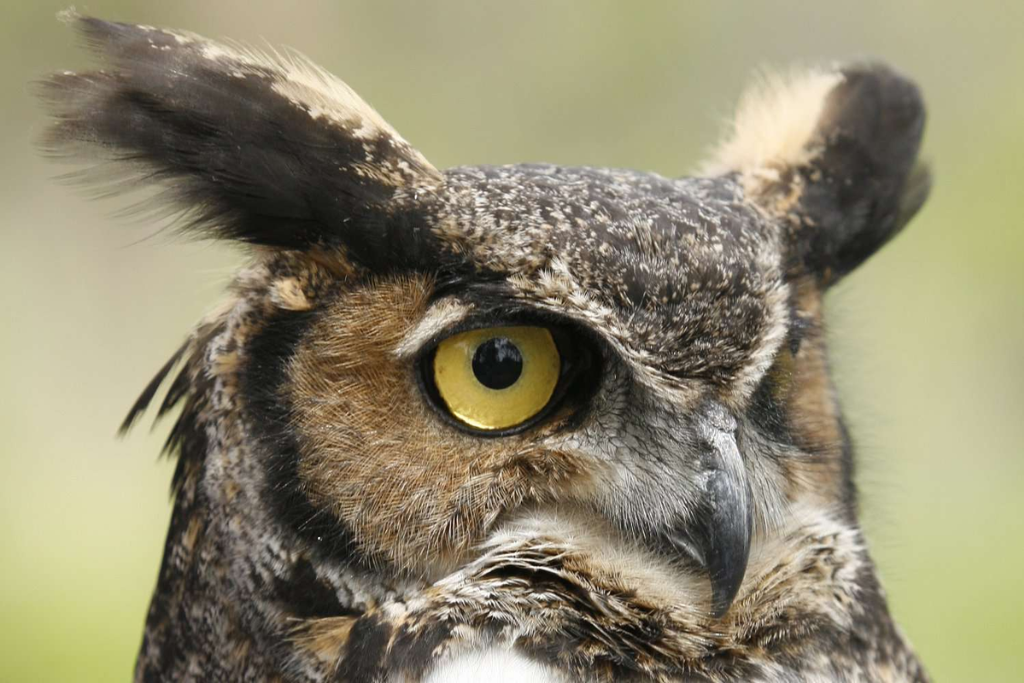Have you ever wondered how birds perceive sound and communicate with each other? They do not have external ears like humans. Their complex hearing system enables them to listen to and understand a wide variety of noises. Sound waves enter through openings called “auricles” located on the sides of their head.

This topic is for birdwatchers or anybody interested in species’ exceptional adaptations. Bird hearing will increase your appreciation for these feathery species and their distinct worldview.
Do Birds Have Ears?

They have ears, but they hear differently. Birds’ highly developed inner ears allow them to hear and understand noises. They use their hearing system to travel, find prey, and communicate with other birds.
There is a common misconception that birds do not have ears, that because they lack external ears, birds’ hearing is not as good as ours. This is untrue.
They lack external ears because of their flight-optimized anatomy. Their feathered ears are hidden on the sides of their skull.
Nature lovers, birdwatchers, ornithologists, and writers who want to authentically portray birds and their sensory abilities should read this article. It debunks myths about the avian auditory system and illuminates how birds adapt to their acoustic surroundings.
Bird Anatomy: The Ear Structure

Birds’ ears differ from mammals’. Most birds lack pinnae, unlike mammals. Their ears are hidden by feathers on the sides of their skull. Even though they lack external ears, birds have a highly developed hearing system.
They have three parts of their ears: outer, middle, and inner. The auditory canal of a bird’s outer ear is rather short. It directs sound to the middle ear. The sound-sensitive eardrum is in the middle ear. The three ossicles send vibrations to the inner ear from the eardrum. The cochlea and auditory nerves are in the skull’s inner ear.
This unique ear structure in birds allows them to detect and interpret a wide range of sounds. It enables them to navigate their surroundings, communicate with other birds, and locate prey efficiently. Their hearing systems are highly functional and tailored to their demands, despite their different ear architecture.
7 Different Types of Bird Hearing Abilities

- Low-Frequency Hearing: Owls and other night birds can hear lower frequencies better than humans. This type of hearing allows them to locate prey in the dark or pick up on predators approaching from a distance.
- High-Frequency Hearing: Songbirds, like warblers and thrushes, have an excellent ability to detect high-frequency sounds. This allows them to sing complex songs and distinguish between their own species’ calls and those of other species nearby.
- Directional Hearing: Birds like seabirds and shorebirds have impressive directional hearing ability. This helps them spot prey in murky water or navigate long distances.
- Vibrational Hearing: Vibrational hearing allows some birds to perceive low-frequency sounds that humans cannot. They can detect vibrations in the air or ground and interpret them into meaningful data, like the presence of predators.
- Ultrasonic Hearing: Bats aren’t the only species with this capability—many birds also possess ultrasonic hearing. This helps them to communicate with each other over long distances and detect potential threats before they can be seen.
- Enhanced Acuity: Nightjars and owls have sharp hearing acuity and can detect the tiniest sound wave variation. This aids in predator detection and allows them to identify their own cries among those of other birds.
- Wide Frequency Range: Many species of birds have an impressive range of hearing, meaning they can detect both high and low frequencies. This helps them pick up on complex signals from other birds, as well as locate food sources over vast distances.
How Do Birds Hear?

Birds’ hearing depends on their inner ear. It converts sound into brain-readable electrical signals. Sound waves vibrate the cochlea’s fluid. Cochlear hair cells generate electrical impulses from these vibrations. Auditory nerves send these signals to the brain, which interprets them as sound.
The ability to hear is crucial to many facets of a bird’s existence. They use vocalizations to claim territory, attract mates, and communicate. Birds use their sense of hearing to locate food, whether it be prey or the rustle of leaves. It helps them detect and respond to potential threats, such as predator calls or alarm signals from other birds in the area.
Tips for Protecting Bird Ears from Noise Pollution

Following these tips can help protect birds from noise pollution and preserve their hearing:
- Avoid using loud machinery and equipment in bird habitats.
- When possible, choose quieter alternatives to power tools and other noisy items when using them near bird habitats.
- Keep dogs away from bird habitats because their noises can distract birds from predators and food sources.
- Support legislation that limits the amount of noise allowed in bird habitats.
- Educate people about the dangers of noise pollution and how it can disrupt birds’ ability to hear sounds from a distance.
- Plant trees and other vegetation to serve as sound barriers against man-made noises near bird habitats.
- Minimize light pollution in areas near bird habitats, as bright lights can interfere with birds’ ability to hear.
- Encourage local businesses to use quieter equipment and machinery when working close to bird habitats.
- Online or public education initiatives about noise pollution and animals can raise awareness.
- Speak out against development in bird areas that might increase noise or disrupt their natural environment.
Final Thoughts
Despite their different ear structures, birds have ears and can hear and understand sound even without pinnae. Their feathered ears are hidden on the sides of their skull. Understanding this distinction dispels the myth that birds have no ears and shows their unique capabilities for sound navigation.
We learn more about birds’ extraordinary adaptations by understanding avian hearing. Their sophisticated auditory system aids communication, foraging, and survival. Let us admire birds’ remarkable ear structure and their unique soundscape perception.
FAQs
Can Birds Hear?
Birds hear. They can hear and understand sound.
Why are Birds’ Ears Hidden?
Birds hide their ears for numerous reasons. Their body form is more aerodynamic without pinnae. Concealed ears protect birds from wind and debris when flying or foraging.
How Can Birds Hear Without Ears?
Birds do have ears, although their ear structure is different from mammals. While they lack visible external ears, birds possess an intricate inner ear that allows them to perceive sound.
Do Birds Have Ears Under Their Feathers?
Yes, birds have ears located on the sides of their heads, beneath their feathers. While their ears are not visible, they are present and functional.
Can Birds be Deaf?
Yes, birds can experience hearing loss or deafness, just like humans and other animals. Genetics, age, loud noises, illnesses, and traumas can cause bird deafness.
Are Birds’ Ears Sensitive?
Birds have highly sensitive ears that allow them to perceive a wide range of sounds and vibrations. Their auditory system is adjusted to their environmental needs and can detect small soundscape changes.
Can Birds Close Their Ears?
Birds cannot close their ears in the same way humans can by voluntarily contracting muscles. Their feathers provide some degree of protection and can muffle or shield their ears to some extent.
Do Birds Hate Noises?
Species and context affect bird responses to noise. Birds might be alarmed or frightened by loud noises. Some birds can handle loud noises, but others can’t.
When Birds go Silent?
Birds may be silent for many reasons. They may be silent during predator activity or when they feel a threat. Some bird species are louder at certain times of day or during breeding seasons.
What Helps a Bird Hear?
Birds’ well-developed auditory system – outer, middle, and inner ears – helps them hear. Sound waves enter the middle ear from the outer ear. The inner ear receives vibrations from the middle ear’s eardrum and ossicles. The inner ear, particularly the cochlea, turns these vibrations into electrical signals that the brain interprets.




